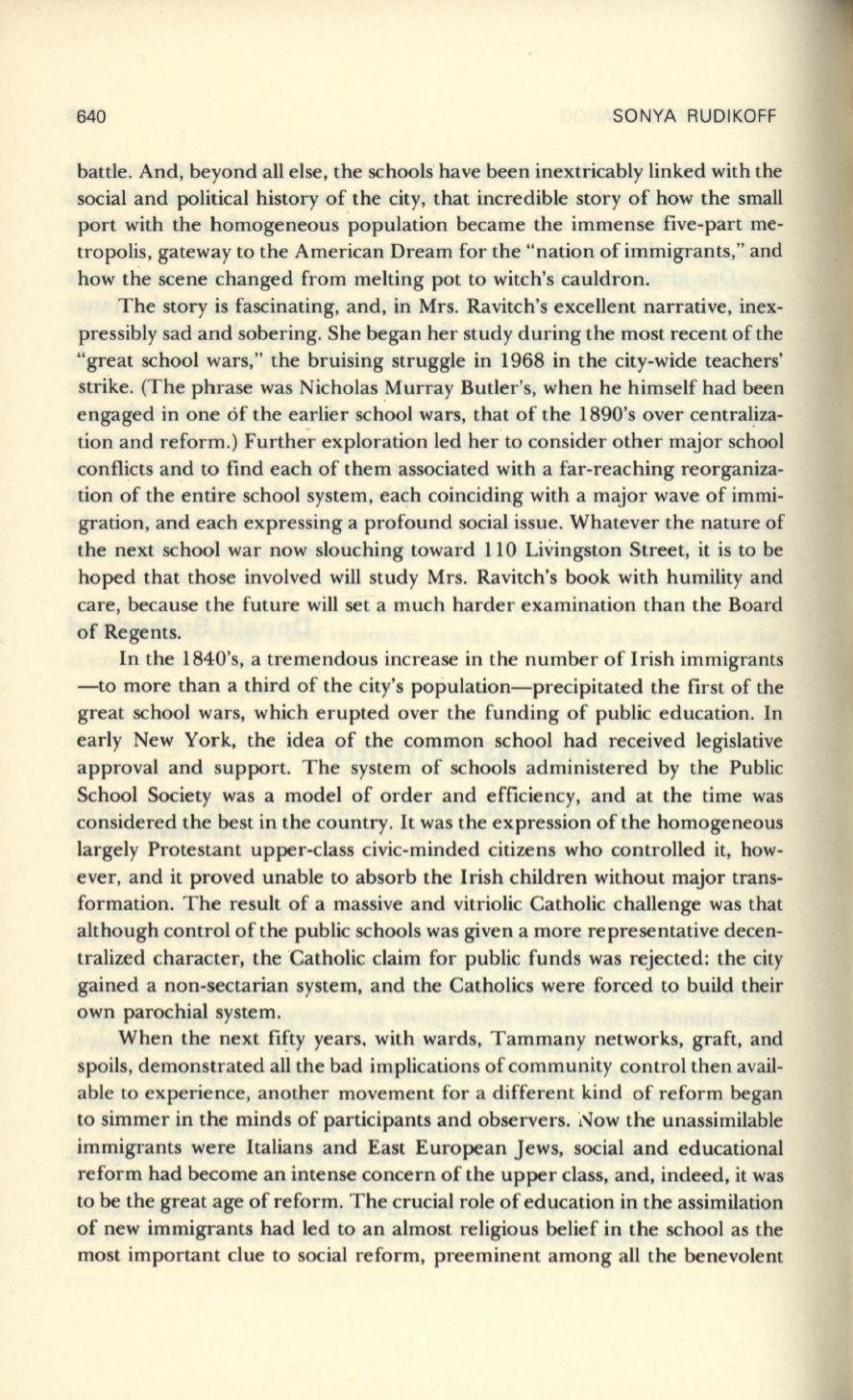
640
SONYA RUDIKOFF
battle. And, beyond all else, the schools' have been inextricably linked with the
social and political history of the city, that incredible story of how the small
port with the homogeneous population became the immense five-part me–
tropolis, gateway to the American Dream for the "nation of immigrants," and
how the scene changed from melting pot to witch's cauldron.
The story is fascinating, and, in Mrs. Ravitch's excellent narrative, inex–
pressibly sad and sobering. She began her study during the most recent of the
"great school wars," the bruising struggle in 1968 in the city-wide teachers'
strike. (The phrase was Nicholas Murray Butler's, when he himself had been
engaged in one Of the earlier school wars, that of the 1890's over centraliza–
tion and reform.) Further exploration led her to consider other major school
conflicts and
to
find each of them associated with a far-reaching reorganiza–
tion of the entire school system, each coinciding with a major wave of immi–
gration, and each expressing a profound social issue. Whatever the nature of
the next school war now slouching toward 110 Livingston Street, it is to be
hoped that those involved will study Mrs. Ravitch's book with humility and
care, because the future will set a much harder examination than the Board
of Regents.
In the 1840's, a tremendous increase in the number of Irish immigrants
-to more than a third of the city's population-precipitated the first of the
great school wars, which erupted over the funding of public education. In
early New York, the idea of the common school had received legislative
approval and support. The system of schools administered by the Public
School Society was a model of order and efficiency, and at the time was
considered the best in the country. It was the expression of the homogeneous
largely Protestant upper-class civic-minded citizens who controlled it, how–
ever, and it proved unable to absorb the Irish children without major trans–
formation. The result of a massive and vitriolic Catholic challenge was that
although control of the public schools was given a more representative decen–
tralized character, the Catholic claim for public funds was rejected: the city
gained a non-sectarian system, and the Catholics were forced to build their
own parochial system.
When the next
fi~ty
years. with wards, Tammany networks, graft, and
spoils, demonstrated all the bad implications of community control then avail–
able to experience, another movement for a different kind of reform began
to simmer in the minds of participants and observers. ,-Jow the unassimilable
immigrants were Italians and East European Jews, social and educational
reform had become an intense concern of the upper class, and, indeed, it was
to be the great age of reform. The crucial role of education in the assimilation
of new immigrants had led to an almost religious belief in the school as the
most important clue to social reform, preeminent among all the benevolent


